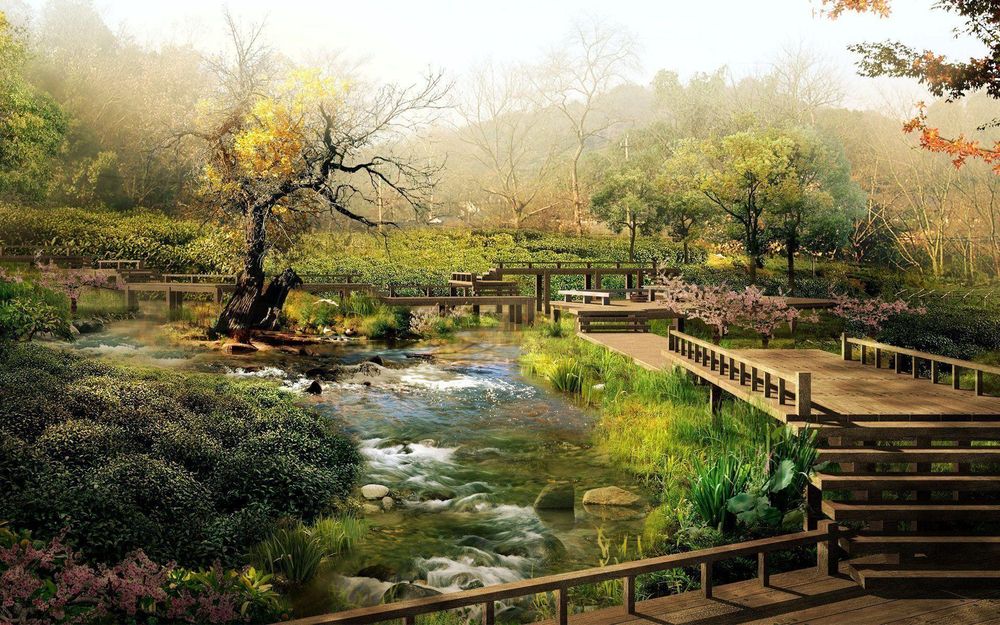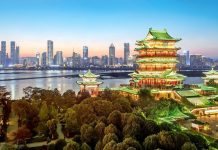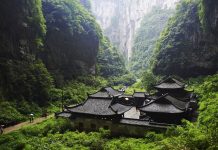Compared to western villages, villages north of Tunxi are less frequently visited by solo travelers. There are also much fewer other tourists there, so no one will stop you from enjoying the silence.
Attractions
Chengkan
A real Chinese village is a hard worker, which has not changed its appearance much compared to the villages of the neighboring Shexian County. Peasants are walking down the street with hoes on their muscular shoulders, the owners of small tea plantations are selling freshly harvested leaves from baskets, ducks are quacking merrily in a nearby stream, and the “aroma” of a pigsty is in the air. Most visitors to the village first of all seek to see the largest ancestral temple of southern China, a massive complex of wooden halls built around several courtyards. It was built for 1 year.
The appearance of the temple is mixed with many architectural elements – from Greco-Roman columns to Persian decoration of ceiling beams. Another notable building is the three-storey Yanitang Hall (Yanyi Tang), erected about 600 years ago. Most of the village buildings don’t look good. Pay attention to the barber shop, the owner of which still cuts clients in a chair that is more than 100 years old. The mirror is about the same age! A magnificent panorama of the Anhui hinterland opens from the surrounding hills.
Tanmb
The village stretched out in a narrow strip along the canal. The length of the Tanma is about 1 km . The beginning of its history dates back to the Tang era. From the eastern gate begins the main street-the embankment leading to Tanganyuan Garden. Its creators tried to create a smaller copy of Hangzhou Xihu Park. This is the most picturesque part of the village, with Qing-era residential buildings huddled between the canal and Shuijie Street. It will take you to the Gaoliangqiao Covered Bridge, built in 123. There is a tea room right on the bridge. In the farthest part of the village you will find the Shangyi-tang Hall, where 199 peony flowers are carved on the beam of the main entrance. Workshops and shops of artisans are located at the eastern gate of Tanmo. Drink homemade soy milk and buy a traditional stone inkwell.
In the village you can stay overnight for about Y60. A regular bus will drop you off at the western gate of the village, where the ticket office is located. The eastern gate can be reached by local transport.

















